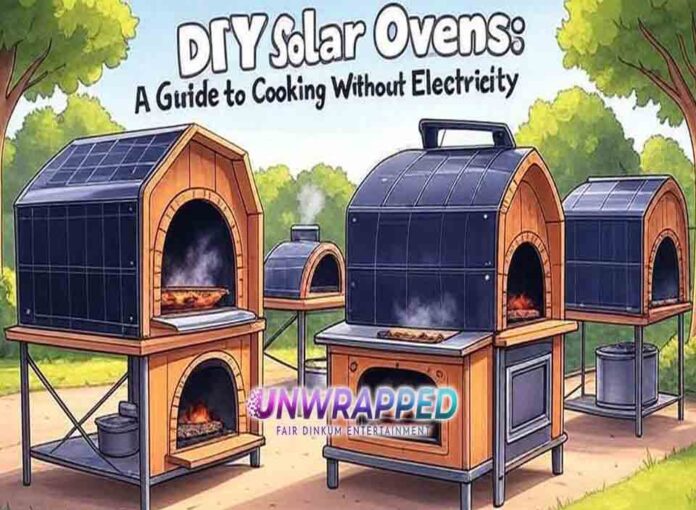In an era where sustainability and self-reliance are increasingly valued, solar cooking emerges as a practical and eco-friendly solution. Harnessing the sun’s energy to prepare meals not only reduces dependence on conventional power sources but also offers a unique culinary experience. Whether for emergency preparedness, outdoor adventures, or reducing one’s carbon footprint, building a DIY solar oven is an accessible and rewarding endeavor.
This comprehensive guide delves into the principles of solar cooking, step-by-step instructions for constructing various types of solar ovens, safety considerations, and tips for successful solar cooking. By understanding the science and techniques behind solar ovens, individuals can embrace a sustainable cooking method that aligns with modern environmental and self-sufficiency goals.
Understanding Solar Cooking
Solar cooking utilizes sunlight as a renewable energy source to cook food. The basic principle involves capturing sunlight and converting it into heat energy, which is then used to cook meals. This method is particularly advantageous in regions with abundant sunshine and serves as an excellent alternative during power outages or outdoor activities.
Benefits of Solar Cooking:
Eco-Friendly: Reduces carbon emissions by eliminating the need for electricity or fossil fuels.
Cost-Effective: Utilizes free solar energy, lowering utility bills.
Healthier Cooking: Retains more nutrients due to lower cooking temperatures.
Safe and Easy: Minimizes fire hazards and is suitable for all age groups.
See Also: 10 Things You Must Know About DIY Raised Garden Beds for Urban Backyards
Types of DIY Solar Ovens
Several designs cater to different needs and skill levels:
Box Cookers: Simple to construct, these ovens consist of an insulated box with a transparent lid to trap sunlight.
Panel Cookers: Utilize reflective panels to direct sunlight onto a cooking pot.
Parabolic Cookers: Employ a parabolic reflector to focus sunlight to a single point, achieving higher temperatures.
Each design has its advantages, with box cookers being ideal for beginners and parabolic cookers suitable for more advanced users seeking higher cooking temperatures.
Building Your Own Solar Oven
Materials Needed:
Cardboard boxes (one larger, one smaller)
Aluminum foil
Plastic wrap or a transparent plastic sheet
Black construction paper
Newspapers (for insulation)
Glue or tape
Scissors or a box cutter
Construction Steps:
Prepare the Boxes: Place the smaller box inside the larger one, ensuring a uniform gap on all sides. Fill the gap with crumpled newspaper for insulation.
Line the Inner Box: Cover the interior of the smaller box with black construction paper to absorb heat.
Create the Reflector: Attach aluminum foil to the inner side of the larger box’s lid, forming a reflective surface to direct sunlight into the oven.
Seal with Plastic: Cover the top of the smaller box with plastic wrap, creating an airtight seal to trap heat.
Adjust the Reflector: Position the foil-covered lid to reflect sunlight into the box, using a stick or string to maintain the angle.
People Also Love: DIY Aromatherapy Blends to Improve Your Mood Naturally
Cooking with Your Solar Oven
Tips for Effective Solar Cooking:
Optimal Timing: Cook during peak sunlight hours, typically between 10 AM and 2 PM.
Proper Positioning: Align the oven to face the sun directly, adjusting as needed to maintain alignment.
Use Appropriate Cookware: Dark, shallow pans absorb heat more efficiently.
Monitor Temperature: Use a thermometer to ensure the oven reaches the desired cooking temperature, usually between 200°F and 300°F.
Safety Considerations:
Food Safety: Ensure food reaches safe internal temperatures to prevent foodborne illnesses.
Supervision: Always supervise the oven during use, especially around children.
Weather Conditions: Avoid using the oven on windy or cloudy days, as inconsistent sunlight can affect cooking performance.
Recipes for Solar Cooking
Solar ovens are versatile and can prepare a variety of dishes:
S’mores: A classic treat, perfect for beginners.
Baked Potatoes: Wrap in foil and cook until tender.
Rice and Vegetables: Combine with water and seasonings in a covered pot.
Cookies and Brownies: Use standard recipes, adjusting cooking time as needed.
Call-to-Action
Embrace sustainable living by building your own solar oven today. Share your solar cooking experiences and recipes with the community to inspire others. For more eco-friendly projects and tips, subscribe to our newsletter and stay connected with like-minded enthusiasts.
Conclusion
Solar cooking offers a sustainable, cost-effective, and educational approach to meal preparation. By constructing a DIY solar oven, individuals can harness renewable energy, reduce their carbon footprint, and gain a deeper appreciation for alternative cooking methods.
Whether for emergency preparedness, outdoor adventures, or daily use, solar ovens provide a practical solution that aligns with modern environmental values. As more people adopt this method, the collective impact on energy conservation and environmental preservation becomes increasingly significant.
Another Must-Read: DIY Acupressure Techniques for Relieving Muscle Tension










